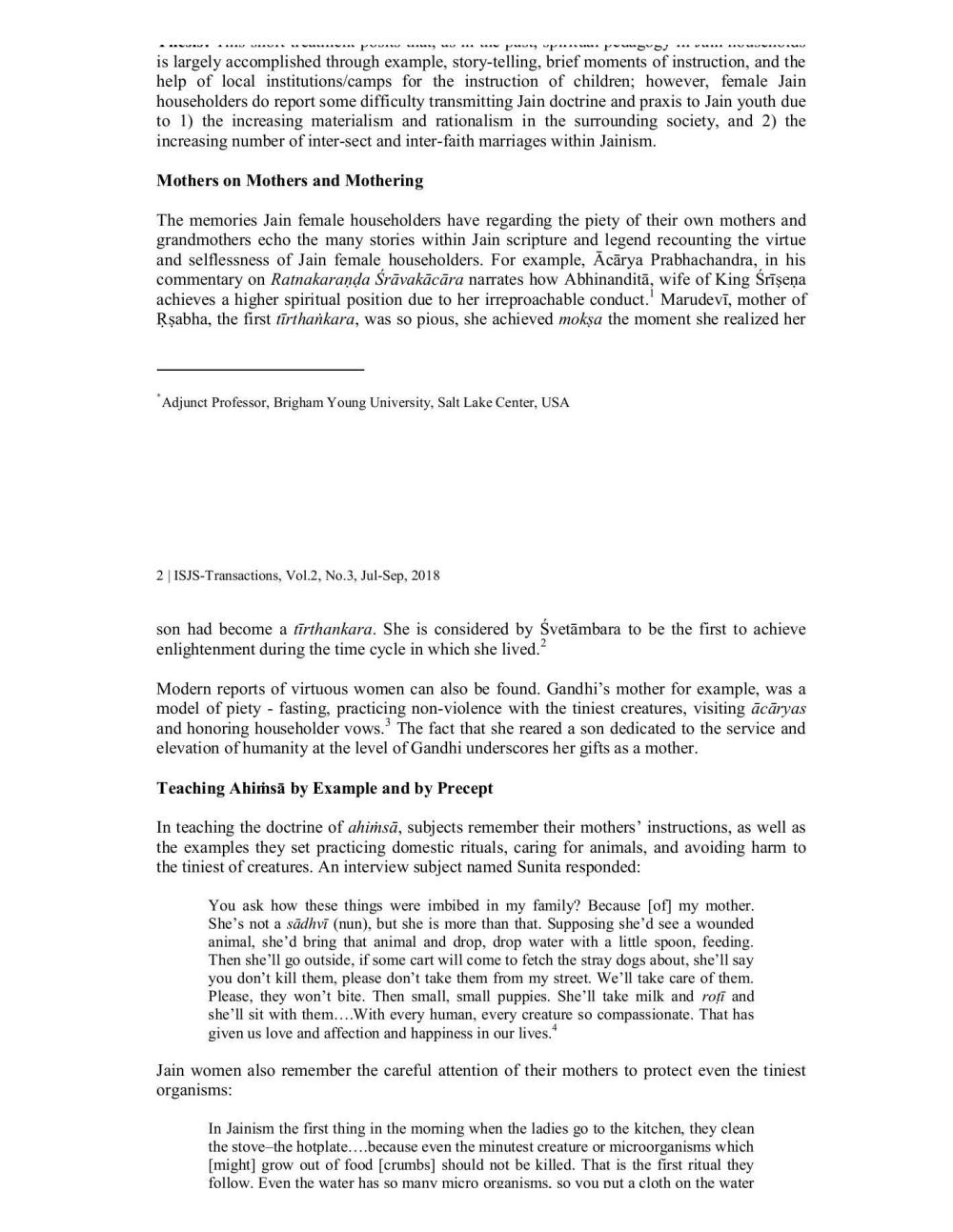Book Title: ISJS Transactions 2018 07 To 09 Vol 02 No 03 Author(s): International School for Jain Studies Publisher: International School for Jain Studies View full book textPage 8
________________ POVE S , . . . .. . ... ... is largely accomplished through example, story-telling, brief moments of instruction, and the help of local institutions/camps for the instruction of children; however, female Jain householders do report some difficulty transmitting Jain doctrine and praxis to Jain youth due to 1) the increasing materialism and rationalism in the surrounding society, and 2) the increasing number of inter-sect and inter-faith marriages within Jainism. Mothers on Mothers and Mothering The memories Jain female householders have regarding the piety of their own mothers and grandmothers echo the many stories within Jain scripture and legend recounting the virtue and selflessness of Jain female householders. For example, Ācārya Prabhachandra, in his commentary on Ratnakaranda Srāvakācāra narrates how Abhinanditā, wife of King Srīşeņa achieves a higher spiritual position due to her irreproachable conduct. Marudevī, mother of Rşabha, the first tirthankara, was so pious, she achieved moksa the moment she realized her Adjunct Professor, Brigham Young University, Salt Lake Center, USA 2 ISJS-Transactions, Vol.2, No.3, Jul-Sep, 2018 son had become a tirthankara. She is considered by Svetāmbara to be the first to achieve enlightenment during the time cycle in which she lived. Modern reports of virtuous women can also be found. Gandhi's mother for example, was a model of piety - fasting, practicing non-violence with the tiniest creatures, visiting ācāryas and honoring householder vows." The fact that she reared a son dedicated to the service and elevation of humanity at the level of Gandhi underscores her gifts as a mother. Teaching Ahimsā by Example and by Precept In teaching the doctrine of ahimsā, subjects remember their mothers' instructions, as well as the examples they set practicing domestic rituals, caring for animals, and avoiding harm to the tiniest of creatures. An interview subject named Sunita responded: You ask how these things were imbibed in my family? Because [of] my mother. She's not a sādhvi (nun), but she is more than that. Supposing she'd see a wounded animal, she'd bring that animal and drop, drop water with a little spoon, feeding. Then she'll go outside, if some cart will come to fetch the stray dogs about, she'll say you don't kill them, please don't take them from my street. We'll take care of them. Please, they won't bite. Then small, small puppies. She'll take milk and roți and she'll sit with them....With every human, every creature so compassionate. That has given us love and affection and happiness in our lives." Jain women also remember the careful attention of their mothers to protect even the tiniest organisms: In Jainism the first thing in the morning when the ladies go to the kitchen, they clean the stove-the hotplate....because even the minutest creature or microorganisms which [might] grow out of food [crumbs) should not be killed. That is the first ritual they follow. Even the water has so many micro organisms. so vou put a cloth on the waterPage Navigation
1 ... 6 7 8 9 10 11 12 13 14 15 16 17 18 19 20 21 22 23 24 25 26 27 28 29 30 31 32 33 34 35 36 37 38 39 40 41 42 43 44 45 46 47 48 49 50 51 52 53 54 55 56 57 58 59 60
